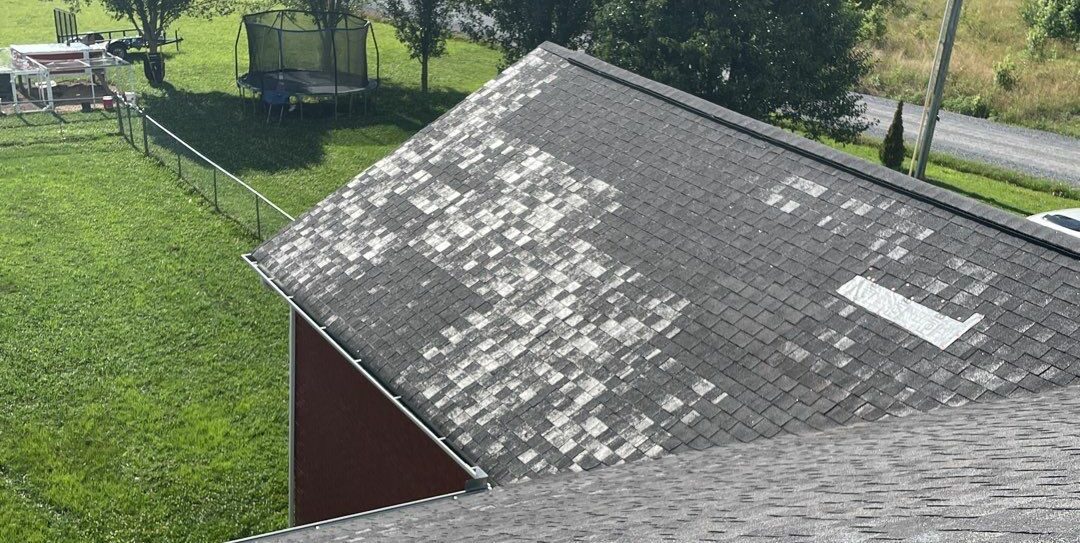Asphalt shingles are a popular choice for residential roofing due to their affordability, durability, and ease of installation. However, over time, they can be susceptible to degranulation, which is the loss of granules from the shingle surface. Degranulation can lead to decreased protection against the elements, eventually resulting in leaks or other roofing issues. This blog post will discuss granule loss and how it is tested to certify asphalt shingle rejuvenation products.
Visual Signs of Granule Loss
Granule loss is easily identifiable with a quick visual inspection of the shingles. Look for the following signs of degranulation:
- Bald spots are areas on the shingle where granules are missing, exposing the asphalt underneath.
- Uneven color: A difference in color or shading on the shingle could indicate granule loss.
- Granules in gutters or downspouts: If you see a buildup of granules in your gutters or downspouts, this could be a sign of granule loss from your shingles.
Check out the images below to see how damaging unchecked granule loss can be to an asphalt shingle roof.
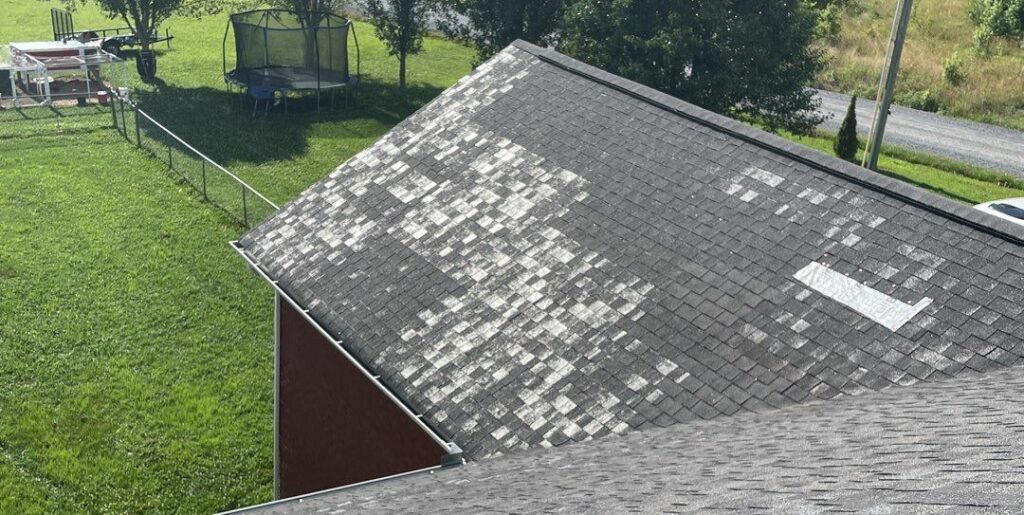
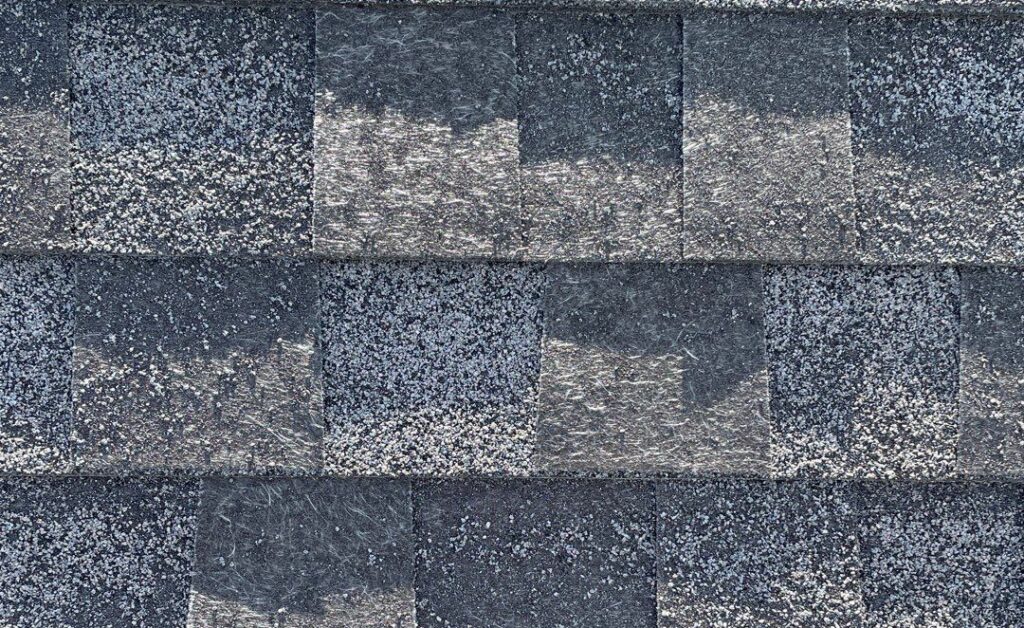
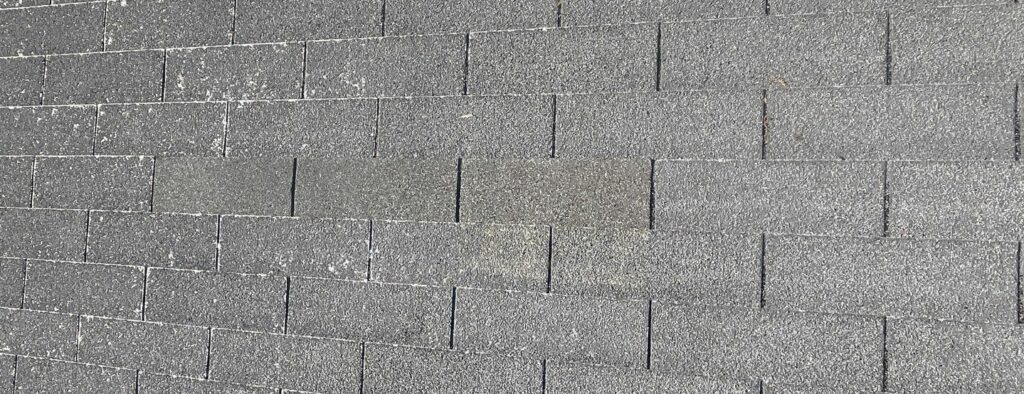
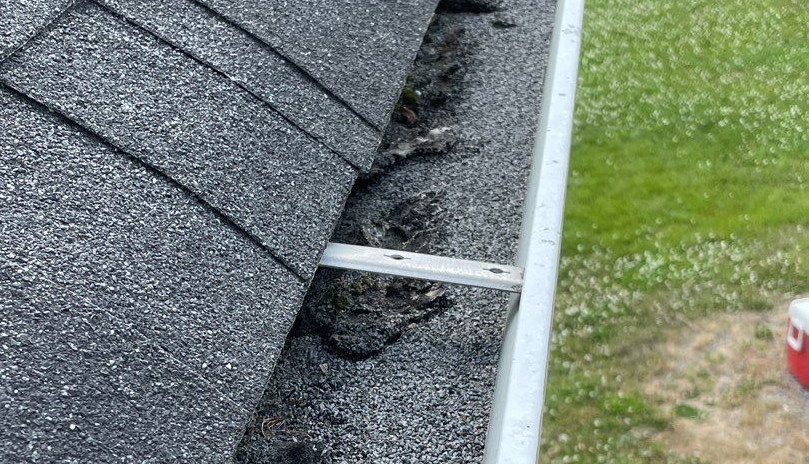
Effects of Granule Loss on Asphalt Shingles
The above examples show the end result of degranulation; these homes need costly, full roof replacements. The reality is asphalt shingles start to lose granules even when new. You can run your hand over a brand-new shingle and see this effect for yourself.
Asphalt shingles will continue to lose granules throughout their life cycle as they are subject to the elements and changing seasons. This loss will eventually lead the shingle to failure. For instance, a thinning shingle is losing its ability to repel water as well as losing its flexibility and wind and impact resistance. Ultimately resulting in two types of failure: abrupt and gradual.
Abrupt failures are commonly seen after storms, and a thinning shingle due to degranulation and granule loss makes the roof and home more susceptible. Hail impact damage is one example of abrupt damage that is amplified by shingle thinning.
Gradual failures are harder to detect and often go unnoticed unless water penetrates into the home through a leak. One of the main issues with a thinning and degranulated shingle is that it is no longer performing as an adequate moisture barrier. At this point, although there may not be an active leak, moisture is getting behind the shingle and rotting the deck board. The end result is more pain to the wallet when it comes time to replace the roof.
Controlling Granule Loss
There is a myriad of factors that influence how quickly and how much an asphalt shingle will lose granules. The region, weather, manufacturer, composition, and grade all play a role in how shingles perform long term. Homeowners can’t control those variables, but they can use an asphalt shingle rejuvenation product like Roof Reboot to stop granule loss before it ever causes performance or cosmetic issues.
Part of our ‘Clean-Restore-Protect’ program at Roof Shield is an application of our asphalt shingle rejuvenation product, Roof Reboot. Roof Reboot brings the performance of the old and aging shingle back to new. And in the case of granule loss, an aging shingle treated with Roof Reboot will hang on to the protective granules better than when it did brand new. Bringing the shingle’s granule retention back to day 1.
Roof Reboot by Roof Shield
At Roof Shield, we will always back up our claims with science so our clients always know they are getting the best product. So when we developed our asphalt shingle rejuvenator, we validated our results with independent, third-party lab testing.
Using the American Society for Testing and Materials test ASTM D4977, we can demonstrate how Roof Reboot improves an asphalt shingle. ASTM D4977 uses a machine to apply a set pressure onto the shingle surface in a sweeping motion for x number of passes. It then measures the change in shingle weight, in grams, to determine the granule loss of the shingle.
ASTM D4977 Granule Adhesion
| Test | Unit | Roof Shield | New Shingle | Competitor |
| Granule Adhesion (ASTM D4977) | grams | .3 | .2 | 1.27 |
The results speak for themselves. Roof Reboot brings the granule adhesion of a 15-year-old shingle back to the level of a new shingle. As for the competition … You can learn more about ASTM here.
Conclusion
Asphalt shingle granule loss and degranulation will inevitably lead to shingle failure. These failures will not only require a costly roof replacement or repair, but they can also lead to damage to the home. By addressing the failure points of asphalt shingles with a roof rejuvenation product like Roof Shield’s Roof Reboot, homeowners can prevent these failures from happening altogether.
Are you a roofer, soft washer, or entrepreneur looking to enter the fast-growing asphalt shingle rejuvenation market? Roof Shield sells to and trains applicators to service homeowners nationwide. Contact Roof Shield today.
To stay in touch with Roof Shield and always see our latest posts, like and subscribe to our:

